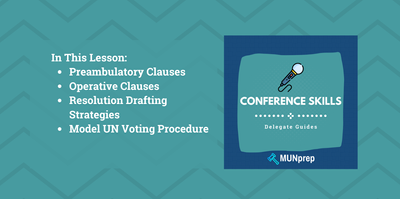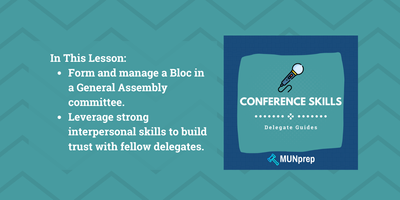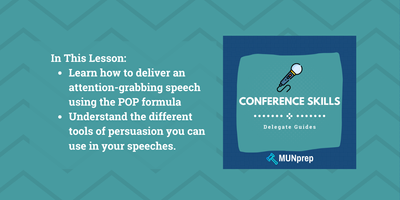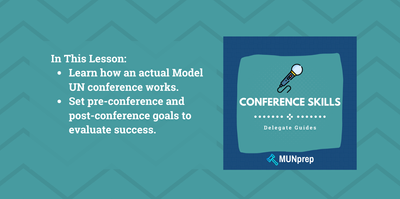MUN Crisis Committees Ultimate Guide
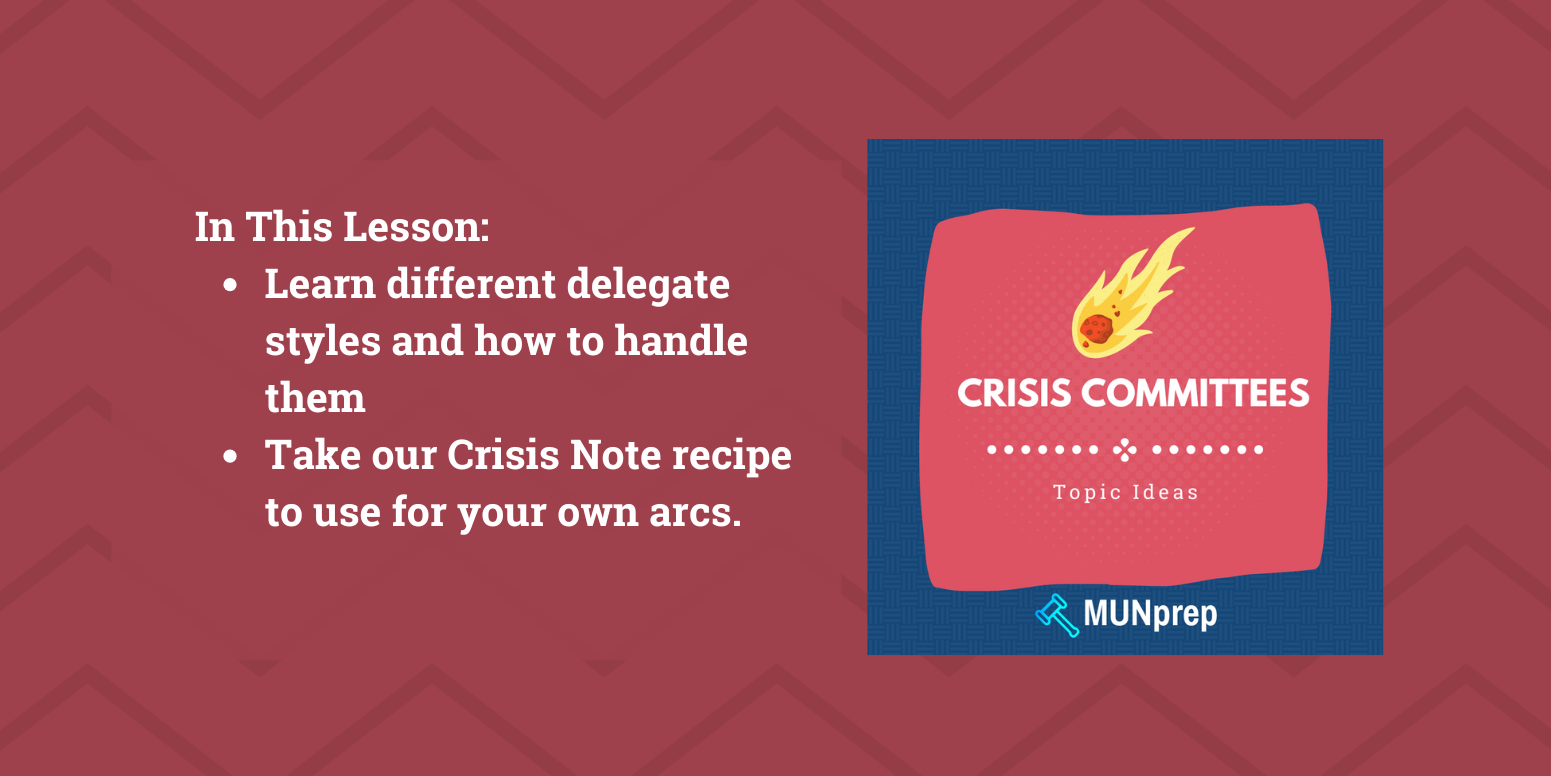
Model UN Crisis committees are a challenging committee style that bring together speech-making, moderated caucuses and resolutions into a fast-paced dynamic environment that includes crisis updates and an entire team of ‘Crisis Staffers’ to help bring your secret agendas to life.
They are an exciting aspect of Model UN that bring a new spin to the classic style, they allow delegates the chance to experience Model UN in an entirely different fashion and test their capabilities.
In this lesson, we’ll help get you started with everything that you should know for your next Crisis committee experience.
The difference between Regular and Crisis Committees
It’s important to note that Crisis and Regular committee styles are meant to take advantage of very different attributes of a Model UN delegate – while GA committees help someone to understand the diplomatic approach to problem solving, Crisis committees encourage a delegate to multitask and engage in a fast-paced problem-solving approach.
Learn more about Model UN committee types here
The first few things that you should know
1 – Different Workflow - Crisis committees use a slightly different workflow to Regular Committees. While you can imagine a Regular committee as one large journey that takes place over the entire conference weekend, a Crisis committee should be considered as a series of short journeys that are building up to one ultimate conclusion.
2 – Different strategies - While your Regular committees might rely on Bloc dynamics and diplomacy, in a Crisis Committee you might need to be a bit sneakier. This might include working to derail Directives that are passed by the committee and generally helping to harm the problem-solving process.
3 - Crisis Notes - In Crisis committees, there is a front-room and a back-room. The front-room works like a faster-paced version of a Regular committee. Everything that happens in the front-room is also affected by what happens in the back-room. The back-room consists of a series of crisis notes that you will write at the same time as your work with the other delegates in-committee.
4 – Less formal style - In Crisis Committees, delegates can embody a particular person and so generally refer to themselves in the First person. This also includes your speeches, you will need to speak much more frequently and more informally.
5 – Secret agendas - In Crisis Committees, it’s not really the best idea to share your plans with other delegates in your committee. If they figure out what you’re planning, they can make plans to stop you. Of course, you can advertise your Directives and certain things that you’re doing, but your Crisis notes should be kept quiet.
6 – Changing plans - You can never be fully prepared for what’s going to happen in a Crisis committee, and so you’ll sometimes need to adjust if your ideas don’t go exactly according to your plans.
The Crisis committee workflow
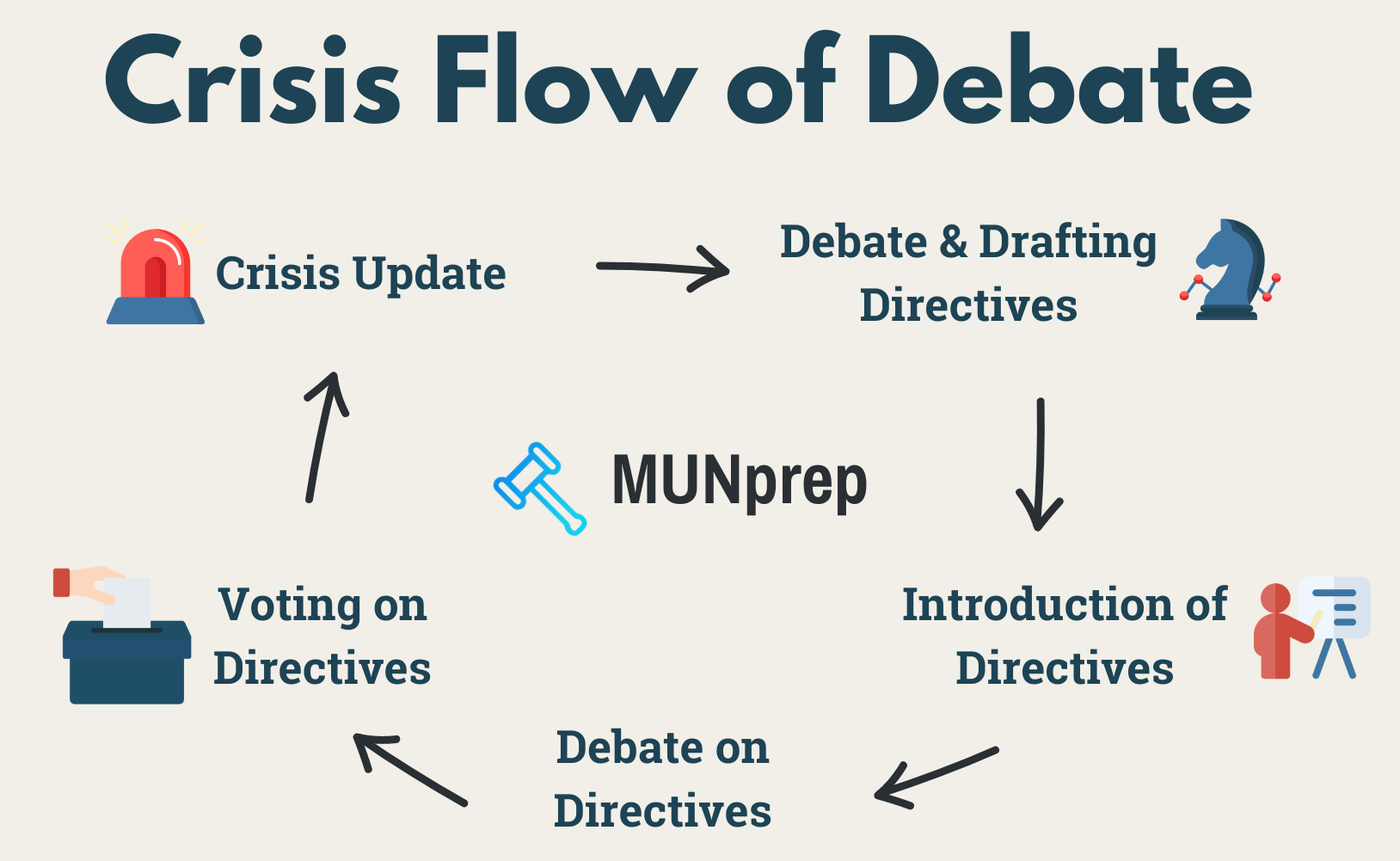
Am I a Crisis Delegate?
Any delegate can learn the skills required to be a quality Crisis delegate!
You just have to be willing to work in a fast-paced environment be able to make a plan and follow it through. You also have to learn how to work with other delegates whilst understanding that they might try to find ways to outmanoeuvre you and take everything that you’ve built!
Just remember that Crisis committees are less cooperative than Regular committees - but they can be much more rewarding if everything comes together in the way that you want it to.
Next, we will show you a few types of delegate that you will run in to and how to handle them.
Different Delegate Styles in Crisis Committees
In a Crisis Committee, you can drive a great deal of progress on your own. But you will also need delegates to sign your directives and to work.
For this reason, its best to have a basic idea of some of the different delegates you’ll run into - this way you’ll know who to avoid!
The Passive Delegate
Same as with Regular Committee Passive delegates, This is typically someone new to the circuit and who does not have a lot of experience with the Crisis Committee style.
This can be a great type of delegate to work with - so long as you’re willing to help them to feel involved with the committee, you can find yourself a valuable friend to work with throughout your conference weekend. You can also teach them and get their support.
They can be useful to work with for a Joint Crisis Note especially if they have a powerful character in committee, they’ll be more than willing to work with you so they can have some level of involvement.
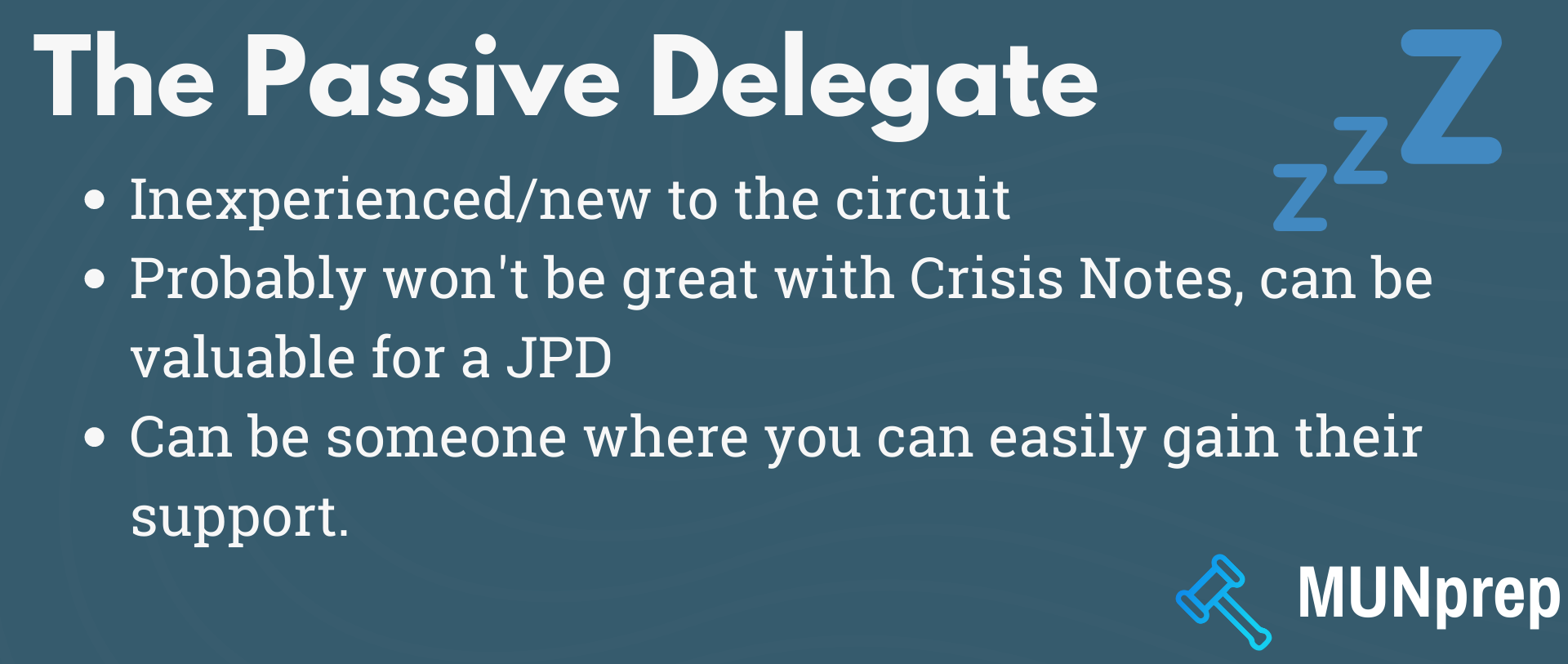
The Research Delegate
This delegate is one that is very well prepared. They generally have some specialized knowledge on your committee topic - and they’re more than happy to show it off. This type of delegate is one that will usually have content heavy speeches and very detailed crisis notes.

The Power Delegate
This type of delegate is one that usually leads a bloc and has Model UN experience. But it’s not just experience and leadership that makes a Power Delegate, its the overconfidence that can come with it. The Power Delegate can be extra problematic in a Crisis Committee as you’ll be more exposed to them due to the smaller committee size.
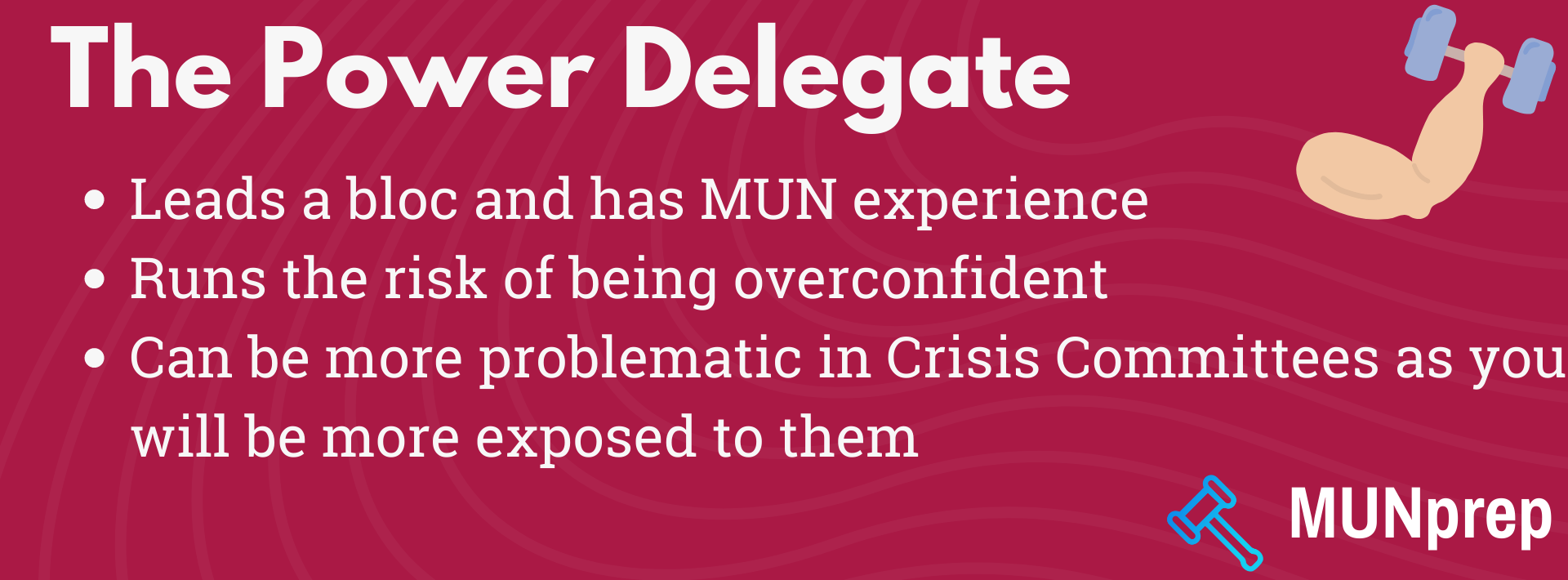

Managing the Power Delegate
Generally, you want a strategy on how to manage their presence in your overarching plans. Here are a few good starting points:
- Try to avoid working with them on Joint Crisis Notes - it’s unlikely it’ll end up benefiting you as much as you would hope.
- Feel free to work with them on a Directive - Keep your friends close and your enemies closer. Collaborating on a directive can help you understand what their end goal may be, additionally during presentations they may even highlight the work you did in the Directive as long as you do the same for them.
- Just don’t partner with them every time and make sure you have your own allies within the committee who are separate from them.
- Support them as much as you go against them in committee debates - Fortunately, with Crisis committees the members you will work with will change often. Positioning yourself against a power delegate is a great way to become a key member in the committee. Going against an outspoken delegate can make you a key part of any discussion and other delegates may even back up your opposition.
- Balancing this with the occasional collaboration can make sure that there isn’t too much animosity and that you are perceived as a delegate who will work with anyone.
The One-sided Delegate
In conferences, there will be delegates who you will never hear from but will always look like they’re working tirelessly on Crisis Notes. There will also be delegates who are always speaking but don’t have a Crisis Arc developed.
This type of delegates is the One-sided delegate - this is a person that doesn’t properly manage their time in committee and spends all of their efforts on only one half of the committee.
These delegates are great to work with as they will serve as a strong partner on the half of the committee that they focus on and you will be able to outshine them on the other half. It can be tricky to spot these delegates until the second day or so however.

What type of crisis delegate do you want to be?
The best types of delegates in Crisis committees have each a bit of the following:

As long as you try to stay well rounded, manage your time and let your authentic personality come through, you’ll be a successful Crisis delegate!
Back Room
In this section, we’re going to put together all of the elements of the Back room in a Crisis committee so you can see how they’ll impact debate in your committee.
Crisis Notes
Crisis notes are half the battle in your committee – like we’ve discussed, a quality Crisis delegate is going to need effective time management skills to coordinate their efforts between the front-room back-room in order to give themselves the best possible chance at success.
So what is a Crisis note? It’s essentially a secret note that you write to a ‘Crisis staff’ who will help you to achieve your agenda.
This graphic should help to make it a bit clearer:

It’s important to note that Crisis Staffers are another part of the Dais - except, you won’t generally speak with them and will only communicate through your Crisis Notes.
Why write Crisis Notes?
Crisis Notes are meant to help you accomplish goals that you generally wouldn’t be able to achieve in Committee. They are meant to help you push your character’s personal agenda forward.
Delegates are writing their crisis notes in order to develop a coherent crisis arc that will come together over the course of your conference weekend – consider the directive writing as hitting a single base run whereas if your crisis arc can come together its your to be your home run.
Make sure you remember that you should make sure that your Back-room work and your aims in committee are not at odds with each other. In fact, if you’re strategic enough, you can make the Directives that you pass in Committee help with your Crisis notes.
Crisis Arc Examples
In simple terms, you should think about a Crisis Arc like a unique story line. In any committee, you will normally have 2 separate Crisis Arcs working at the same time. You can build these stories by providing detail that will eventually bring you to your final conclusion.
Next, we’ll show you what you should do and what not to do for a proper Crisis Arc development.
Note 1
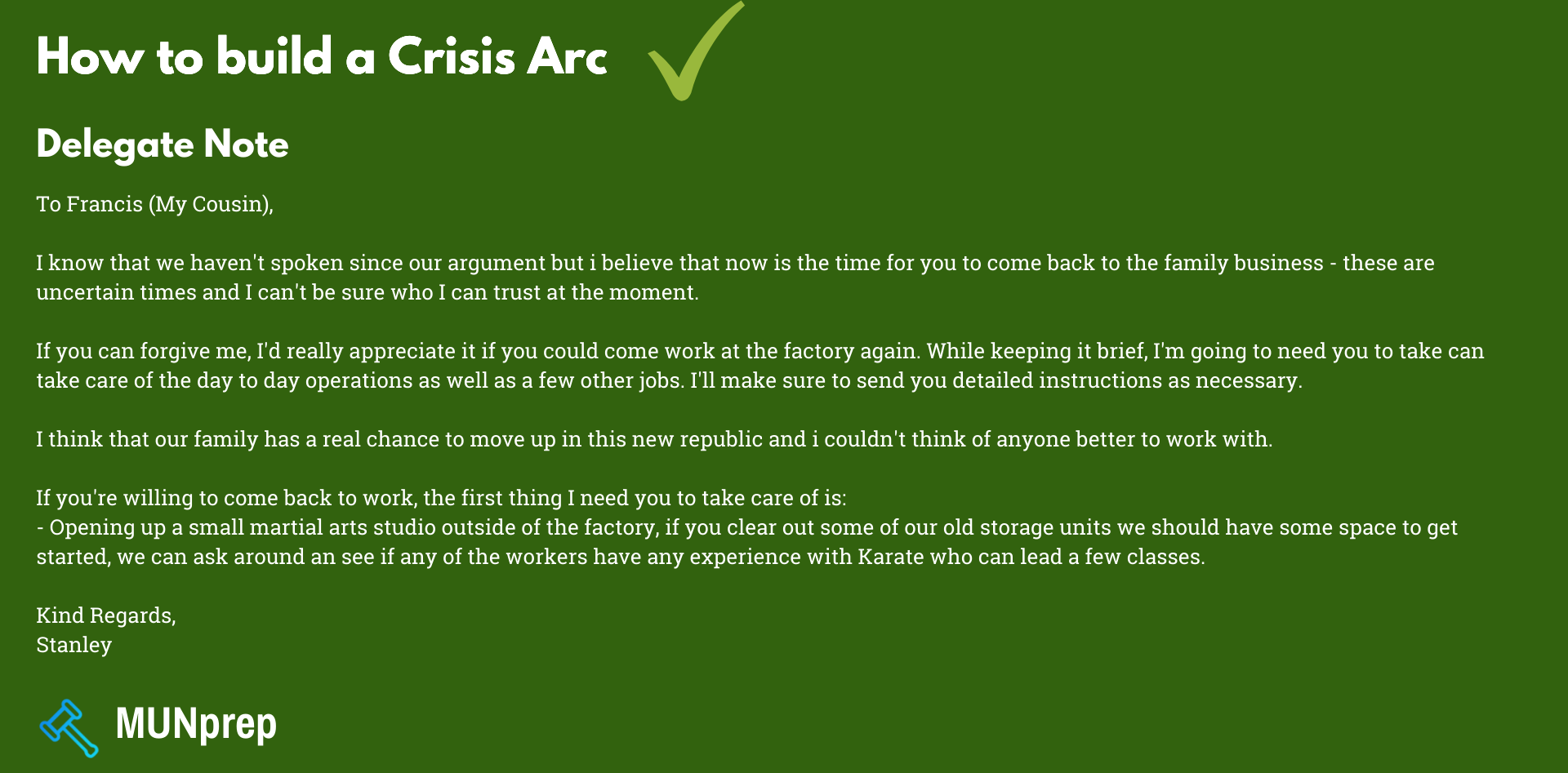
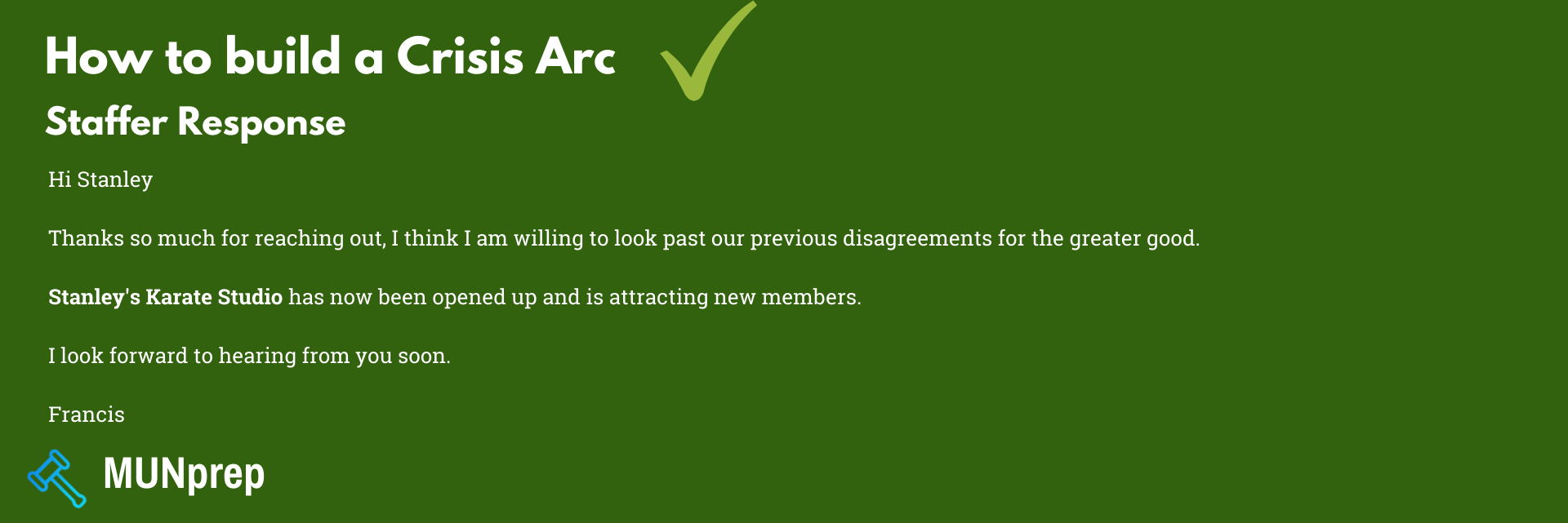
Note 2
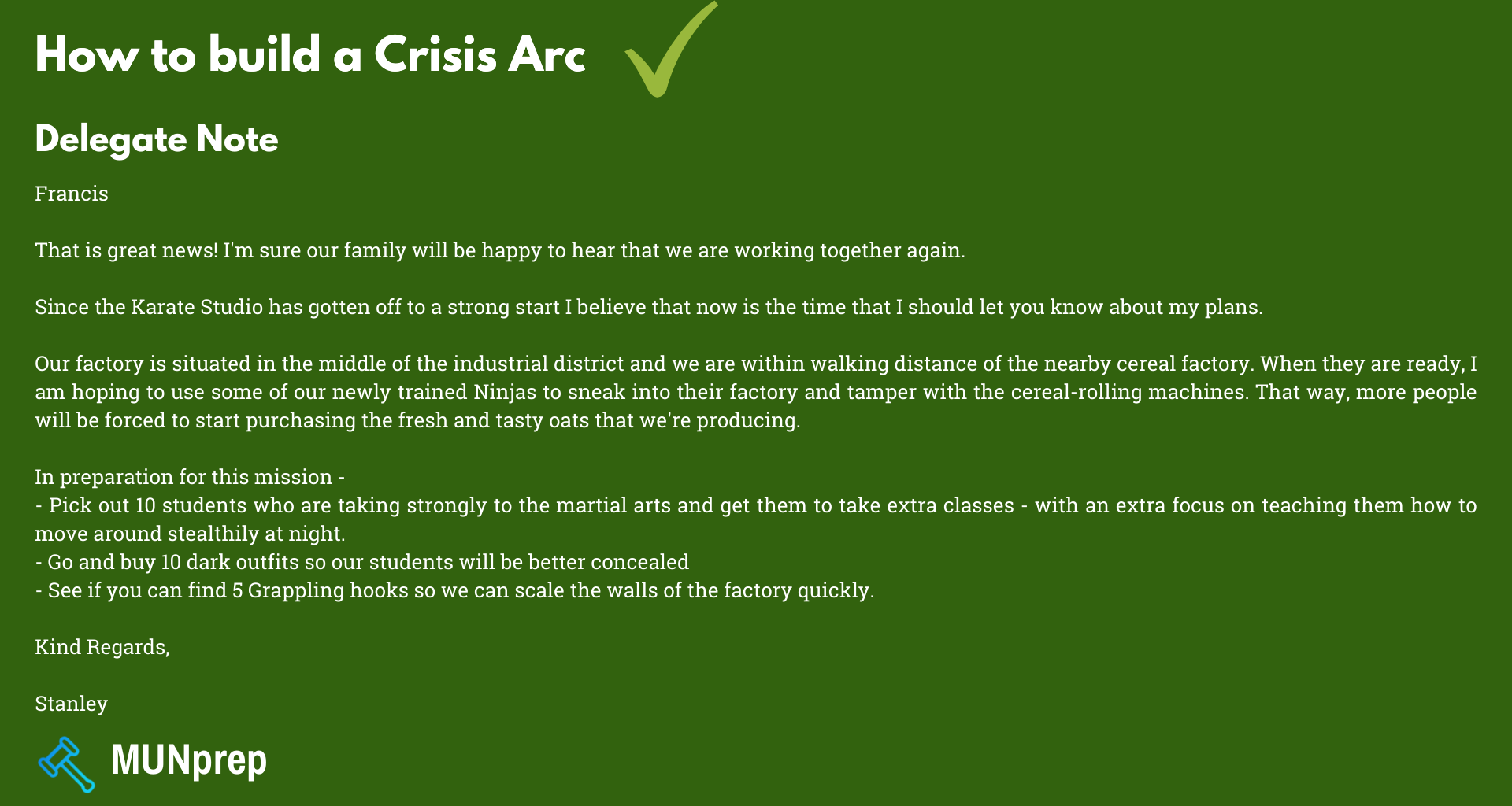

As you can see, in the space of two Crisis notes, the Delegate has started to develop a relationship with their Crisis Staffer. They have begun to explain some of their Preliminary plans and are working to see how amenable the Crisis Staffer is to their strategy. Remember, if you feel as if a Crisis Staffer is not working with you to get you what you need, it might be because they don’t understand what you’re trying to do, or they don’t want you to pursue a particular route.
Let’s look at an example where a Crisis Staffer might not be as cooperative:
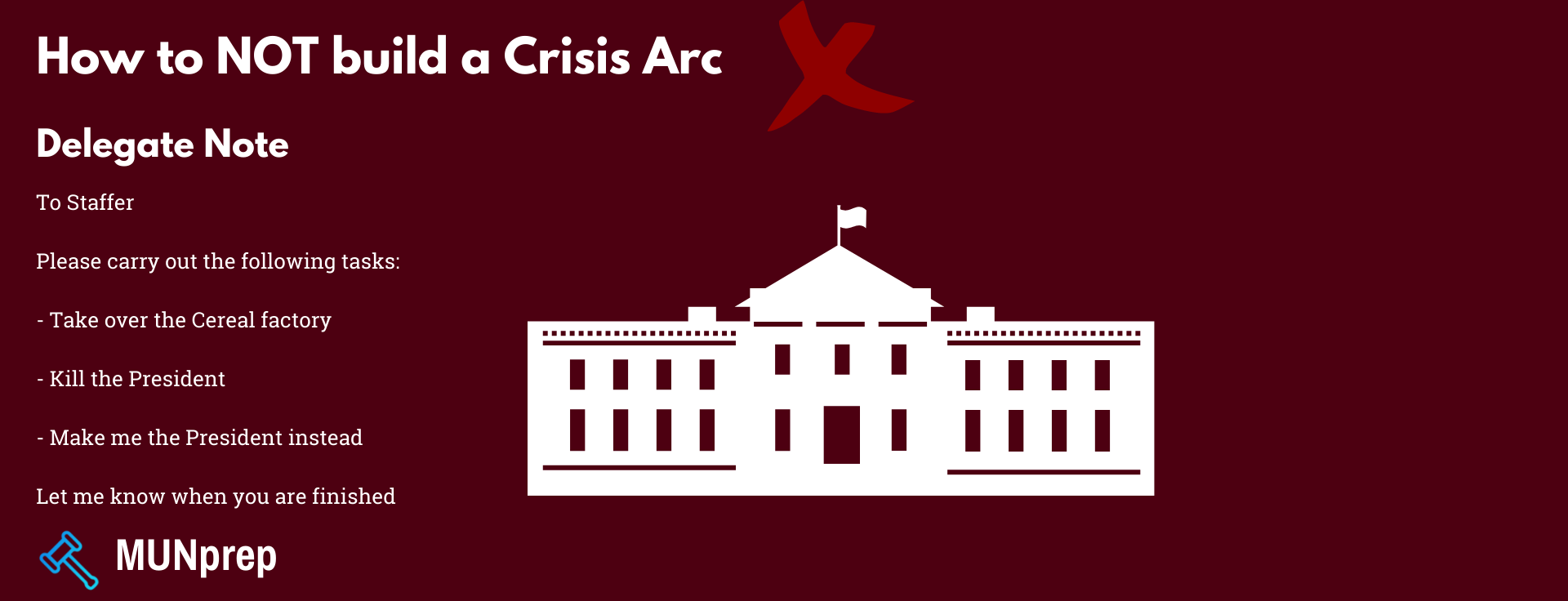
This is the type of note that might be written by a Delegate with little to no Crisis experience. Here, there is no understanding for the development that is required by Delegates to achieve their goals. Remember, at the end of the day - a Crisis Staffer will give you as much as they believe you deserve. You have to always show that you have put in work and due consideration with each step of your plans.

Coordinating Directives with Crisis Notes
When working in your committee - always try to work smarter. For example, take advantage of getting a Directive passed as a way to help you with your Crisis Notes. For example - if there has been an explosion and in your directive you want to hire a cleanup team to help sort through the debris; you could try to hire workers who might be related to some of your Crisis Arcs. This would save you the work of having to write more Crisis notes to place your workers and instead you could just get it voted through by the Committee.
Of course, if you’re trying to sneak something into a resolution that will help with your crisis notes – don’t make it too obvious, a clear clause that has no place being in a resolution will obviously be spotted by a discerning delegate and will then be voted out of a directive through a divide the question.
A great way to conceal the explosion example listed above would be by listing a number of different types of workers.
Writing your Crisis Notes
When putting together a Crisis note, you need to make sure you include a few specific elements each time:
Character - who are you writing to
Objective - what are you trying to achieve
Detail - how will you go about achieving this
Lets look at one of our draft crisis notes from earlier:


Building a rapport with your Crisis Staffer
As you can see from this introductory note with the Crisis Staffer, there was a lot of information that may not have been a part of the primary Objective or Detail. But it still serves a purpose to help build a relationship with the Crisis Staffer you’re working with. At the end of the day, the Crisis team can only include so much information in a particular Crisis update, and a lot of the time, the people who’s notes they enjoy reading the most and who they believe are working the hardest will be the ones they decide to include.
Joint Crisis Notes
Joint Crisis Notes or Joint Private Directives (JPD) are a special type of Crisis note that you write with another delegate in your committee. They can either be used to start a fresh arc or build on something that you’ve already been working on.
There are a 3 reasons why you would want to write a JPD:
- Both of you end up having similar Crisis arcs and the Crisis staff recommend that you combine them
- You believe that you can more effectively achieve a particular objective by working with someone else
- You’re allowed to start an extra Crisis arc if you work with someone else (Some conferences have limits on how many Crisis arcs you can have at the same time)
Beyond these 3 reasons, its not normally a problem to write your Crisis notes by yourself. You’re better off to have full creative control over your back-room work.
Deciding how much to tell your JPD partner
Like we’ve said, Crisis arcs are a private exercise and you don’t want delegates to know what you’re up to. But when you’re working with another delegate you’re going to need to tell them a few things in order to cooperate effectively.
To keep it simple, if a Crisis staffer asks you to work with another delegate to combine your arcs, you should just fill that other delegate in on your plans. At this point, you’re both equally invested in making a particular idea work.
In any other situation you should ideally keep the other person involved on a need-to-know basis.
Crisis Updates & Q&A periods
Crisis updates will happen frequently throughout your committee and they will be your one look into what other delegates are working on in the back-room and how the dais wants you to progress.
They generally start with an initial presentation by the Crisis staff followed by a brief Q&A period. There are a few things you should keep in mind.
- Try to solve the problems brought up in the Crisis Updates through Directives, Crisis updates are meant to fuel in-committee discussion.
- Always try to think of a question that you can ask during the Q&A period, it generally serves as a free opportunity to speak and get involved.
Conclusion - Is Crisis right for you?
As you can see, the back-room dynamic is a very unique twist to a Model UN committee, it can make the committee feel like a large amount of work. But it can also be a very worthwhile experience. In the next lesson, we’re going to show you how to navigate the Front-room dynamics of a Crisis Committee.


